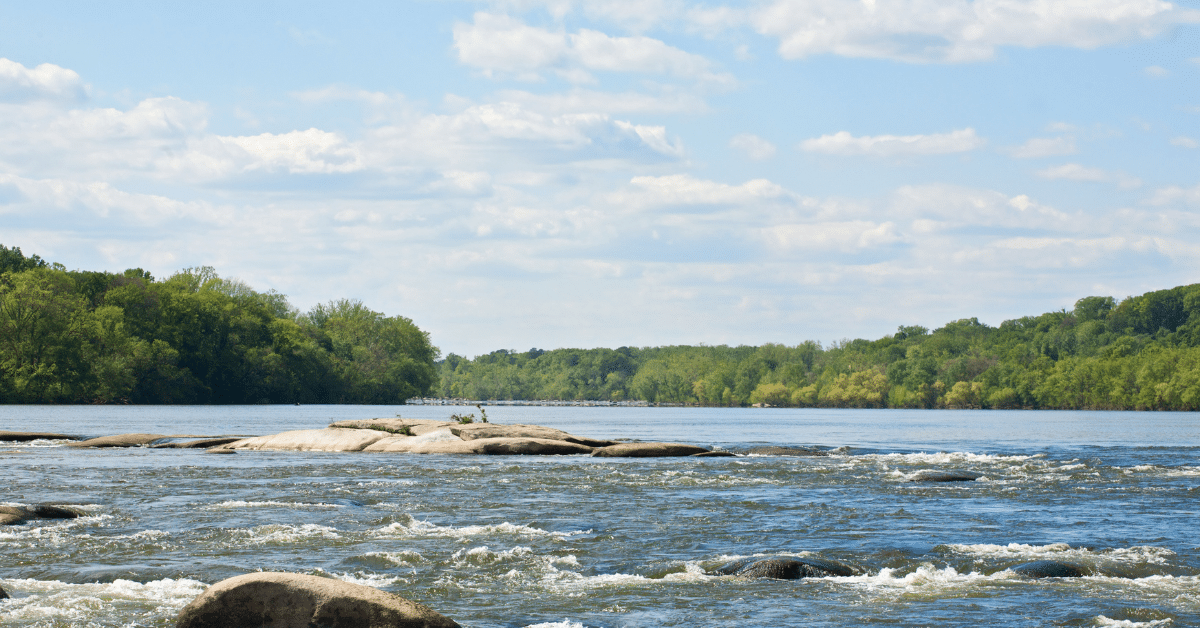
The Ebb and Flow of Pollution in the James River
Known as America’s ‘founding river,’ the James River is the lifeblood for much of Virginia’s biodiversity, the provider of water to 2.7 million residents, and acts as an abundant source of recreation for many. Though the James has a tumultuous history of pollution, significant progress has been made over the last several decades to restore its water quality.
Progress in Restoring the Water Quality of the James
The decline of contaminants in the James has proved fruitful in many ways, one of which is a resurgence of wildlife once on the brink of extinction, such as the Atlantic sturgeon and the bald eagle. Sturgeon, commonly referred to as ‘living fossils’ due to their armor-like appearance and the fact that they predate dinosaurs, spend their adult years in the Atlantic Ocean and migrate to rivers such as the James in the spring and fall to spawn. Until 2018, Atlantic sturgeon hadn’t been tagged in the James for over a decade and today their population numbers are in the hundreds and continue to recover with the help of improved water quality and fishing protections. Similarly, the bald eagle population declined so much in the 1970s that a single nesting pair could not be found along the James River due to pollutants and habitat loss. Today, the James is home to over 300 nesting pairs of eagles and remains the focal point for monitoring their population in the United States.
The improved cleanliness of the James has also contributed to the quality of life for its residents. Aside from providing drinking water, the river supplies numerous opportunities for low and no cost activities such as swimming, fishing, tubing, rafting, and kayaking.
A Loss in Momentum
Unfortunately, the improvements in water quality we’ve seen have become stagnant in the last several years, which has resulted in new concerns such as a decline in the American shad population. Shad, once an important food source to Native Americans and decades of Virginians, most recently scored 0% in population monitoring with pollution being cited as a primary reason for the decline.
Additionally, around 15% of the time the river is deemed unsafe to enter due to high levels of bacteria resulting from agricultural and urban runoff. One of the primary causes of this is Richmond’s outdated combined sewer overflow system, which dumps untreated sewer waste into the James during periods of high rainfall. Though legislation was passed to stop the use of the combined sewer overflow system by 2035, there are growing concerns that the city won’t be able to meet this deadline. Adding to these worries was the General Assembly’s removal of $100 million in funding for this effort from the current budget; though Governor Youngkin has committed to enabling state assistance for this effort, how that will be managed hasn’t been determined.
How You Can Help
Wild Virginia seeks to hold agencies, such as the Virginia State Water Control Board, responsible for the actions they’re taking to protect our waters from further degradation. You can help us by signing our petition to support Virginia’s clean water futures.